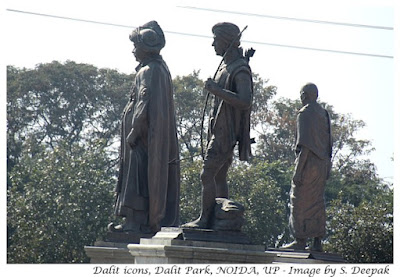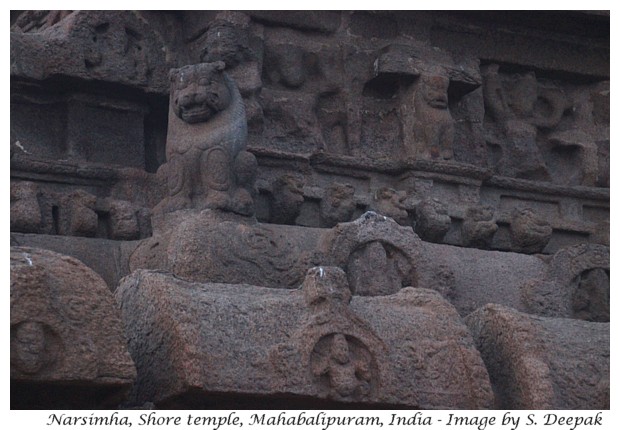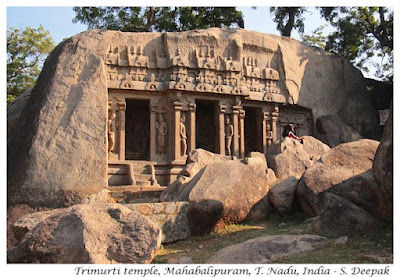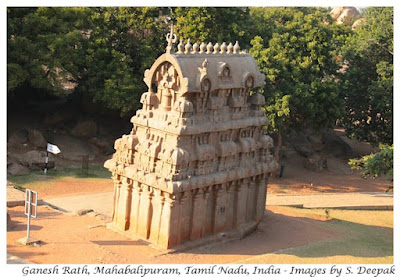Rashtriya Dalit Prerna Sthal
RDPS or the National Inspiration Memorial of Dalits was commissioned in 2011 by Ms. Mayawati, a Dalit leader, who was at that time the chief-minister of UP state. The word “Dalit” literally means “Downtrodden” and denotes persons belonging to the so called “lower” castes in India, who have been marginalised and exploited for centuries by persons of other, so-called “higher” castes.Before Mayawati, dalits have had some other famous representatives, who have left a mark in Indian history. Dr. Ambedkar, one of the most important dalit leaders during the independence struggle, is considered the father of the Indian constitution. Babu Jagjivan Ram, a dalit leader belonging to Congress party, had been a famous minister in the Indian national government for more than a couple of decades. Another dalit leader from Congress party, K. R. Narayanan, had become vice-president of India in 1992 and president in 1997.
After the independence of India in 1947, gradually Dalit population groups had also started organising themselves politically. A dalit leader, Mr. Kanshi Ram, had founded a political party called Bahujan Samaj Party (BSP) in 1984 to represent their political aspirations. Mayawati, a leader of BSP, formed the state government in UP in 1995, the most populous state of India with more than 200 million population at that time. After more than a decade of coalition governments, Mayawati formed her first majority government of dalits in 2007. By becoming a symbol of Dalit power and visibility, Mayawati has represented the collective rise of dalits.
Construction of the Dalit Prerna Sthal (Dalit Inspiration Memorial) in NOIDA close to Delhi, was a way to remind the people about this transformational journey of marginalised dalit people. For this reason, many persons also call it Dalit Garv Sthal (Dalit Pride).
Reaching Dalit Pride Park
The first Delhi Metro station had opened in 2002. Since then it has grown into one of the biggest metro network in the world with more than 250 stations and covering about 350 kms. The Magenta line going to Okhala Bird Sanctuary station had opened in 2017. It connects Janakpuri in west Delhi to Botanical Garden in UP in the east, covering a little more than 38 kms with 25 stations.Check the latest metro map to see how you can reach Okhala Bird Sanctuary metro station from your home/hotel.
My Adventures in visiting Dalit Pride Park
My first motivation for this visit was the Okhala Bird Sanctuary. It was January and I had read about thousands of migratory birds visiting the Okhala area around the river Yamuna. On the Google map I had seen that Dalit Pride Park was very close so I had decided to visit both these places.My journey had began in Gurgaon and I had taken the magenta line from Hauz Khas, reaching Okhala Bird Sanctuary Metro Station in a little more than one hour.
Getting out of metro station I had my first encounter with the reality – the exit stairs crossed a wide and busy road, full of fast traffic, and came down to a narrow platform in the middle of the road. There were no signs about how to reach the Bird Sanctuary or the Dalit Pride Park around the Metro Station. Crossing the road to reach the sidewalk was my first dangerous adventure. There was no sidewalk and the shops occupying the area, were not able to tell me how far was the Dalit park, except to indicate the general direction.
My satisfaction was short-lived, as the children playing there told me that this gate was locked and to enter the park, I needed to walk to the next gate. Another 15 minutes of walk brought me to the next gate, but it was also closed. Resigned I walked to the successive gate, where a young man selling the spicy fruit-chaat explained to me that all the park gates were closed and the only gate open to public was gate number 5, another half-an-hour of walk away.
By that time, the sun was up and it had become warm. I had been walking for more than one hour and was already tired. I tried looking for an auto but after 10 minutes gave up the idea. Finally, deflated and defeated, I started my walk back to the metro station.
Along the outer wall of the Dalit Park, there were narrow openings from where I could look inside and take a few pictures. It looked green and lovely with a lot of columns in a pink stone, with elephants at the top, which are the electoral symbol of BSP. In the centre of the park there was a monument with statues of Kanshi Ram, Mayawati and other Dalit icons. Through the narrow openings, the pictures have not come out so well and all the statues looked grey or black.
Looking from outside, I did not see any visitors in the park except for a few uniformed men sitting in the shade near the locked gates, looking bored.
Back at the metro station, frustrated and tired, I half-heartedly asked persons about the way to the Okhala Bird Sanctuary. They pointed vaguely towards the bridge on the river. To reach that part, I needed to cross a wide road full of fast-moving traffic without any place for pedestrians. In the end, I thought that it was time for me to lick my wounded pride and retreat from this visit. My only consolation was that I had seen some parts of the park from the outside.
Need for Dalit Pride Parks
Caste is a huge and deeply rooted issue in Indian society. Caste related reservations in educational institutions and government jobs are sources of resentment among persons of "higher" castes. Proposed as a temporary measure at the time of India's independence, it has now grown into a multiple-headed hydra with different caste groups claiming backwardness and right to reservations.On the other hand, in spite of the equality guaranteed by the Indian constitution, marginalisation and oppression of Dalits continues to be a serious issue in many parts of India, especially in small towns and rural areas.
Yet, there is no systematic way of promoting discussions on this theme in India. During my school years, the only mention of caste discriminations had come during discussions on Mahatma Gandhi and perhaps during the lessons on medieval bhakti poets of India. There was no lesson on how caste discriminations work systematically across our daily lives and nothing about continuing inhuman treatment of specific "lower" caste groups even today. For example, manual scavenging was declared unlawful long time ago, yet there are still places where human beings are forced to carry excreta on their heads and unprotected men are forced to go down in the gutters and manholes to clean them manually, even in the national capital. Many educated Indians growing up in big cities feel that caste discriminations was something belonging to the past because they do not believe in caste distinctions, and have no idea of its continuing terrible impact.
In such a situation, I feel that Dalit Parks can play important roles in promoting public discussions on castes and its negative impacts. For example, they can help in informing public about the reality of caste discriminations through testimonies, films, art and sculptures. They can also showcase important contributions made by dalit leaders to create positive role models. School children should be taken to these Dalit museums, to learn about India's history, its continuing social disparities and to make a vow to fight these.
To Uttar Pradesh Tourism Board
Metro is an accessible public transport that brings tourists to different parts of the city. UP Tourism Board should make an effort to make it easier for persons reaching the Okhala Bird Sanctuary Metro Station to visit the Dalit park and the bird sanctuary. It will be good if a tourism department official actually travels by Metro to understand how difficult it is for people to come out of the metro station and to visit these 2 places.Allowing only one gate of the park to be open and choosing that gate which is most far away from metro station for this purpose, seems not only illogical, but also against poor and middle class persons, who do not have their own cars or vehicles for travel.
The tourism board should also put relevant sign boards at the metro station to guide the interested persons. Finally, if they can also make arrangements to facilitate visits by persons with disabilities and old persons (like me), it would be wonderful.
I can guess that the reason why only one gate of the Dalit Park is kept open for public, is to sell tickets and control entry. However, if you check how much money this park is earning from the visitors and if it is a small amount, make the entry to Dalit Park free so that more persons can visit it, experience what it means to be Dalit and face caste discriminations and learn about the pernicious effects of caste-system in India.
Conclusions
I believe that visiting Dalit park and learning about discriminations and inhuman treatment of dalits in India is a great idea – similar to visits to holocaust sites and genocide museums in Europe and monuments to Black-resistance sites in the USA. Often, people and government seem embarrassed to accept that India still has caste-related discriminations. Instead, we need to openly talk about it, make it a prominent discussion point and highlight all that which has been done by national and state governments as well as, by activists to fight it. I hope that UP Tourism Board and Government of India will wake up to its importance and make it an essential part of visits for tourists coming to India.There are still many aspects of caste-related exploitation that are not well understood. For example, while oppression and exploitation of “lower” castes by “higher” castes is a big problem, I feel that hierarchies and intra-caste inequalities and discriminations among the “lower” castes is also an issue. Unless we talk about these aspects, how can we hope to transform India into an equal and progressive society?
Our Upanishads, the ancient Hindu sacred texts, say that there is the same universal consciousness in all living beings. Similar messages from all different religions of India also need to be celebrated in the dalit parks to promote a change in mentality.
Like the queer communities across the world celebrating GLBTIQ pride parades, perhaps one day all cities of India will have colourful and joyful dalit parks and dalit pride parades, where people can learn about our social history and express our pride in our identities.





















































